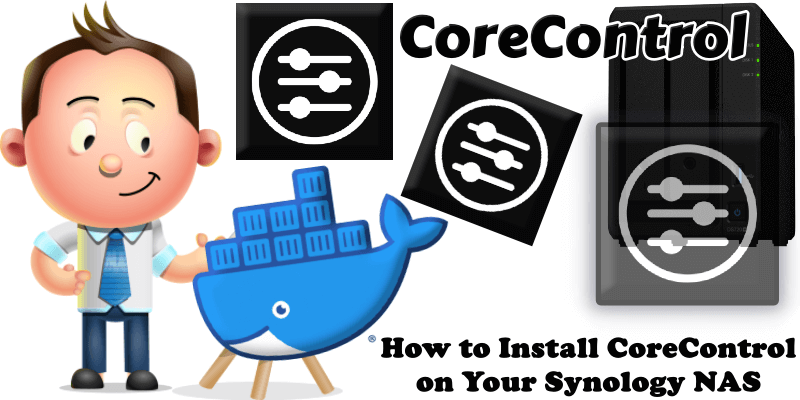
CoreControl is an open-source dashboard designed to simplify the management of your entire server infrastructure. It provides a centralized interface to monitor and control servers, leveraging a robust setup that includes a web interface, agent, and PostgreSQL database. CoreControl is ideal for system administrators seeking a streamlined, scalable solution to oversee their infrastructure efficiently. In this step by step guide I will show you how to install CoreControl on your Synology NAS using Docker & Portainer.
STEP 1
Please Support My work by Making a Donation.
STEP 2
Install Portainer using my step by step guide. If you already have Portainer installed on your Synology NAS, skip this STEP. Attention: Make sure you have installed the latest Portainer version.
STEP 3
Go to File Station and open the docker folder. Inside the docker folder, create one new folder and name it corecontroldb. Follow the instructions in the image below.
Note: Be careful to enter only lowercase, not uppercase letters.

STEP 4
Log into Portainer using your username and password. On the left sidebar in Portainer, click on Home then Live connect. Follow the instructions in the image below.
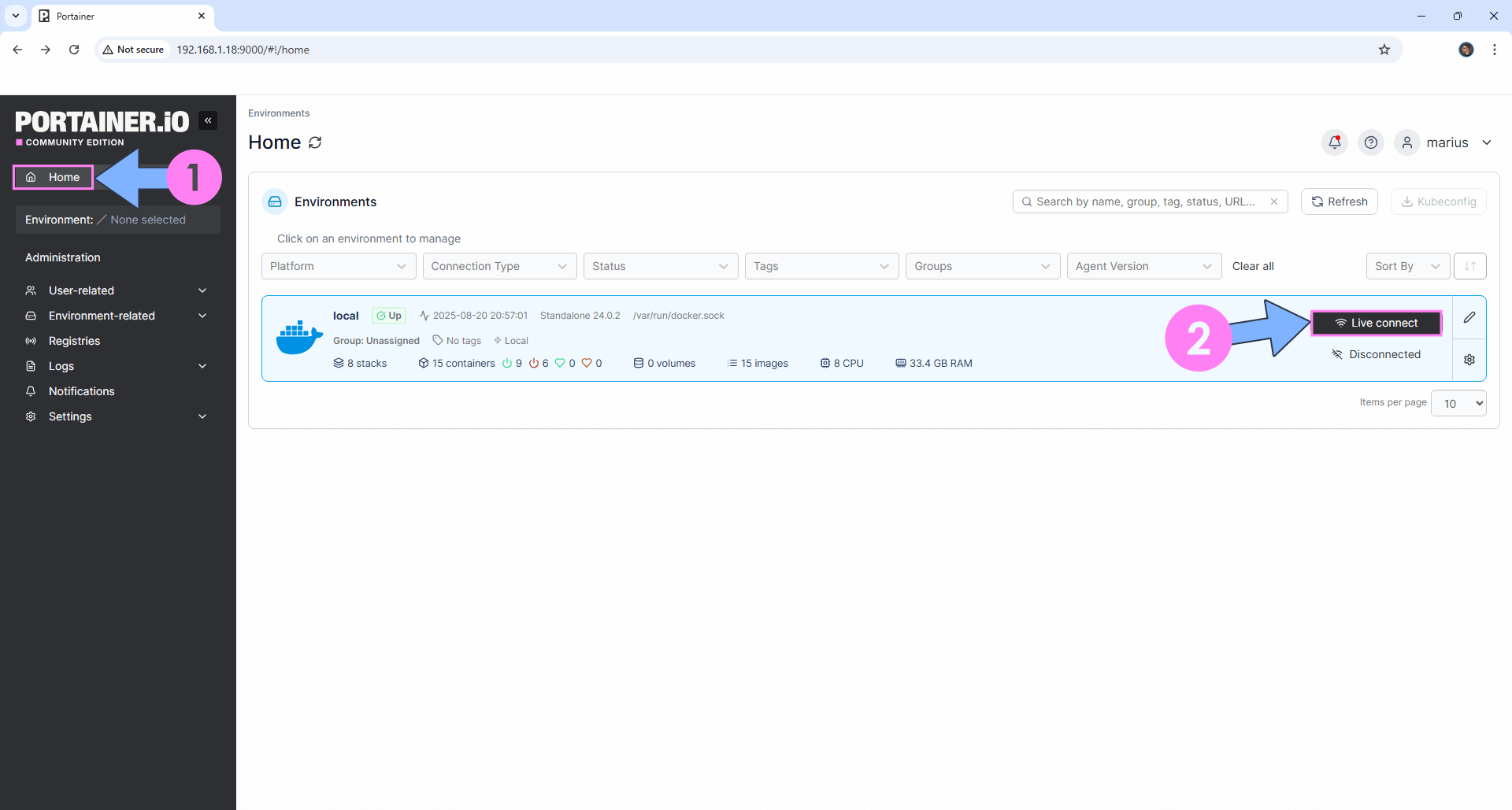
On the left sidebar in Portainer, click on Stacks then + Add stack. Follow the instructions in the image below.
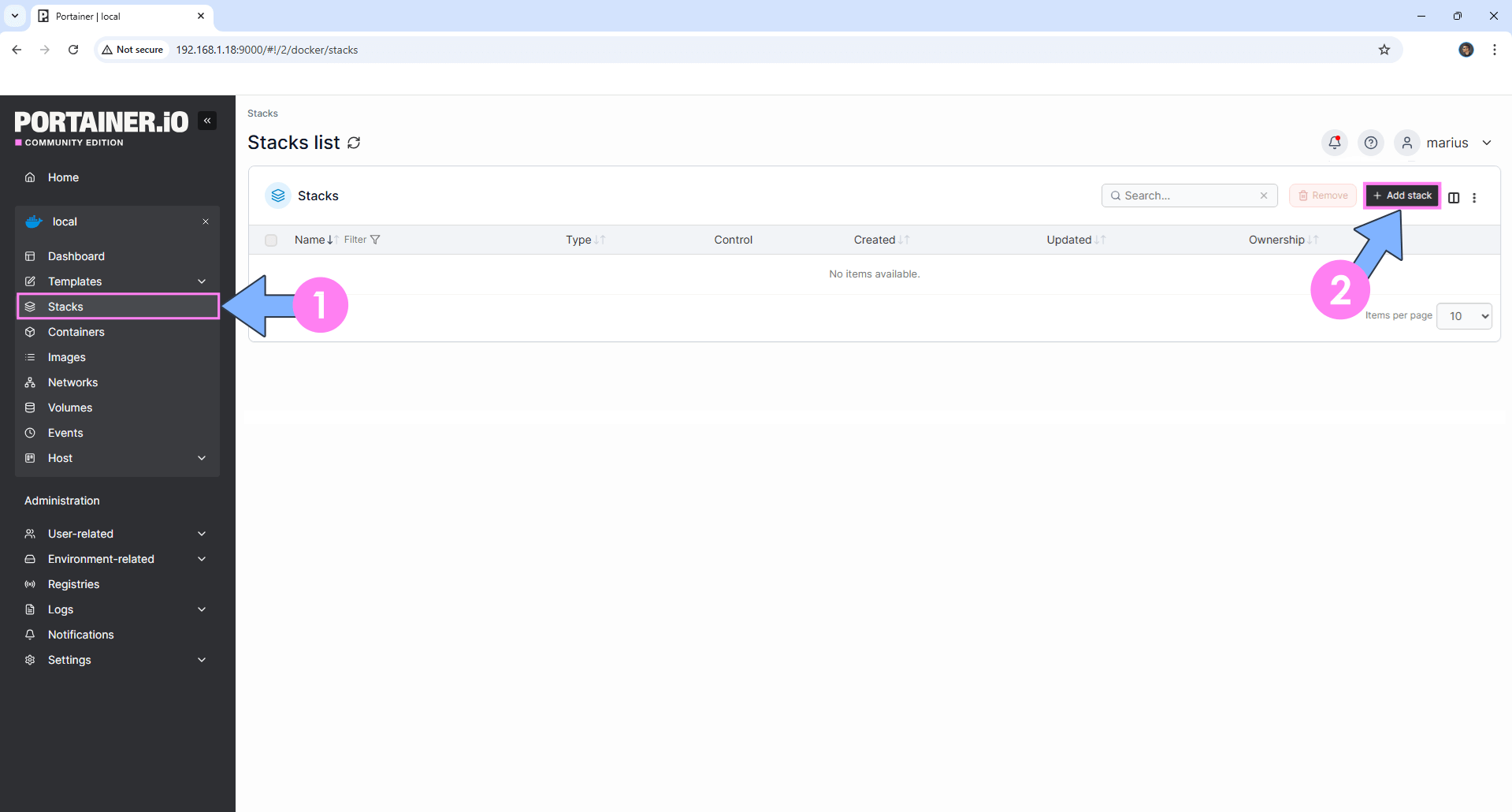
STEP 5
In the Name field type in corecontrol. Follow the instructions in the image below.
services:
web:
image: haedlessdev/corecontrol:latest
container_name: Core-Control
healthcheck:
test: ["CMD-SHELL", "nc -z 127.0.0.1 3000 || exit 1"]
interval: 10s
timeout: 5s
retries: 3
start_period: 90s
ports:
- 3323:3000
environment:
JWT_SECRET: dOxZYTTZgXKMHkqLBIQVImayQXAVWdzGBPuFJKggzcgvgPJPXpWzqzKaUOIOGGIr
DATABASE_URL: postgresql://corecontroluser:corecontrolpass@corecontrol-db:5432/corecontrol
depends_on:
- db
- agent
restart: on-failure:5
agent:
image: haedlessdev/corecontrol-agent:latest
container_name: Core-Control-AG
environment:
DATABASE_URL: postgresql://corecontroluser:corecontrolpass@corecontrol-db:5432/corecontrol
restart: on-failure:5
db:
image: postgres:17
container_name: Core-Control-DB
hostname: corecontrol-db
security_opt:
- no-new-privileges:true
healthcheck:
test: ["CMD", "pg_isready", "-q", "-d", "corecontrol", "-U", "corecontroluser"]
timeout: 45s
interval: 10s
retries: 10
volumes:
- /volume1/docker/corecontroldb:/var/lib/postgresql/data:rw
environment:
POSTGRES_DB: corecontrol
POSTGRES_USER: corecontroluser
POSTGRES_PASSWORD: corecontrolpass
restart: on-failure:5
Note: Before you paste the code above in the Web editor area below, change the value for JWT_SECRET. (Generate your own Random 64 length JWT_SECRET.)
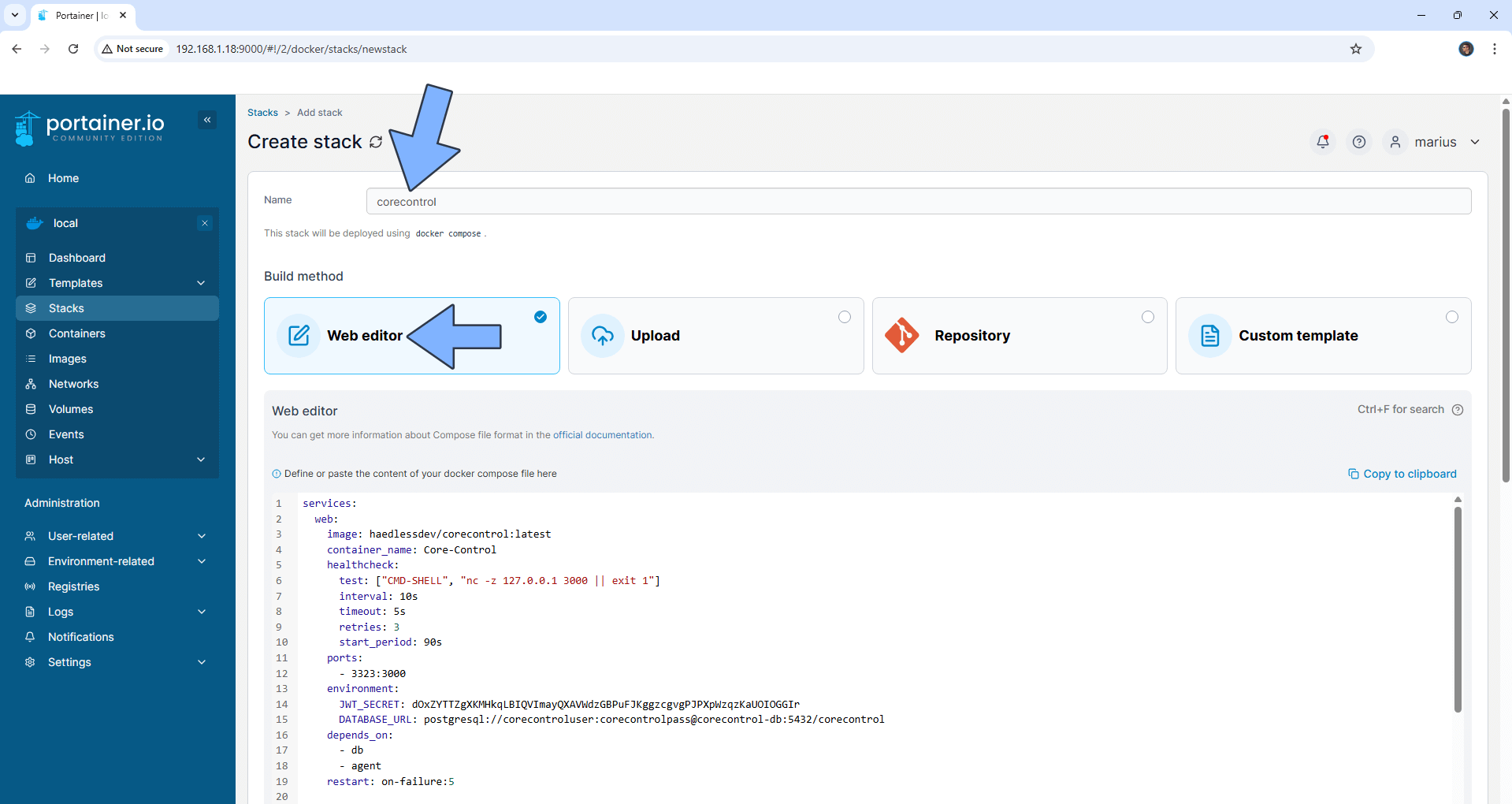
STEP 6
Scroll down on the page until you see a button named Deploy the stack. Click on it. Follow the instructions in the image below. The installation process can take up to a few minutes. It will depend on your Internet speed connection.

STEP 7
If everything goes right, you will see the following message at the top right of your screen: “Success Stack successfully deployed“.
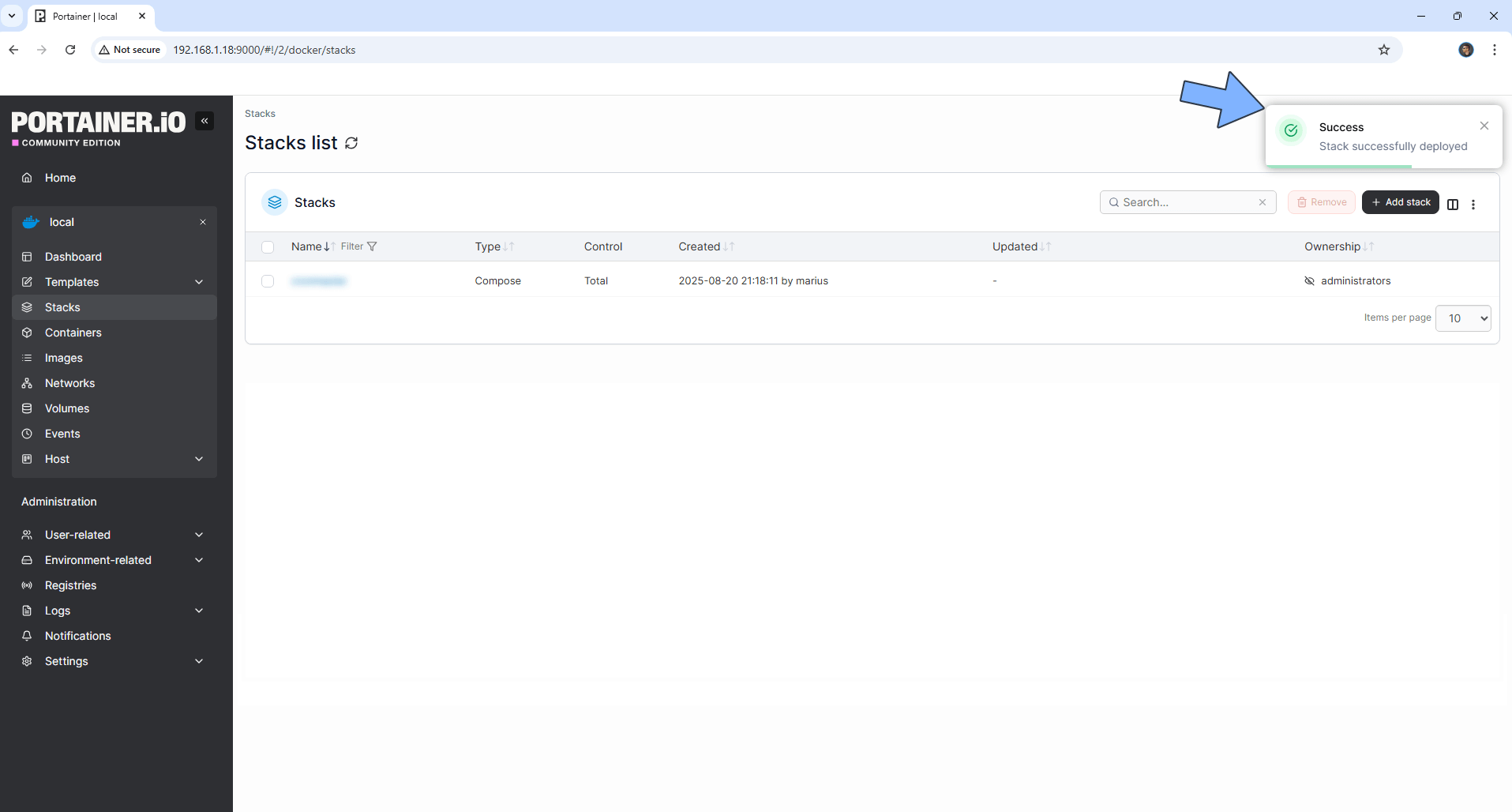
STEP 8
🟢Please Support My work by Making a Donation. Almost 99,9% of the people that install something using my guides forget to support my work, or just ignore STEP 1. I’ve been very honest about this aspect of my work since the beginning: I don’t run any ADS, I don’t require subscriptions, paid or otherwise, I don’t collect IPs, emails, and I don’t have any referral links from Amazon or other merchants. I also don’t have any POP-UPs or COOKIES. I have repeatedly been told over the years how much I have contributed to the community. It’s something I love doing and have been honest about my passion since the beginning. But I also Need The Community to Support me Back to be able to continue doing this work.
STEP 9
The installation process can take up to a few seconds/minutes. It will depend on your Internet speed connection. Now open your browser and type in http://Synology-ip-address:3323 Type in the default Email and Password, then click Sign in.
Follow the instructions in the image below.
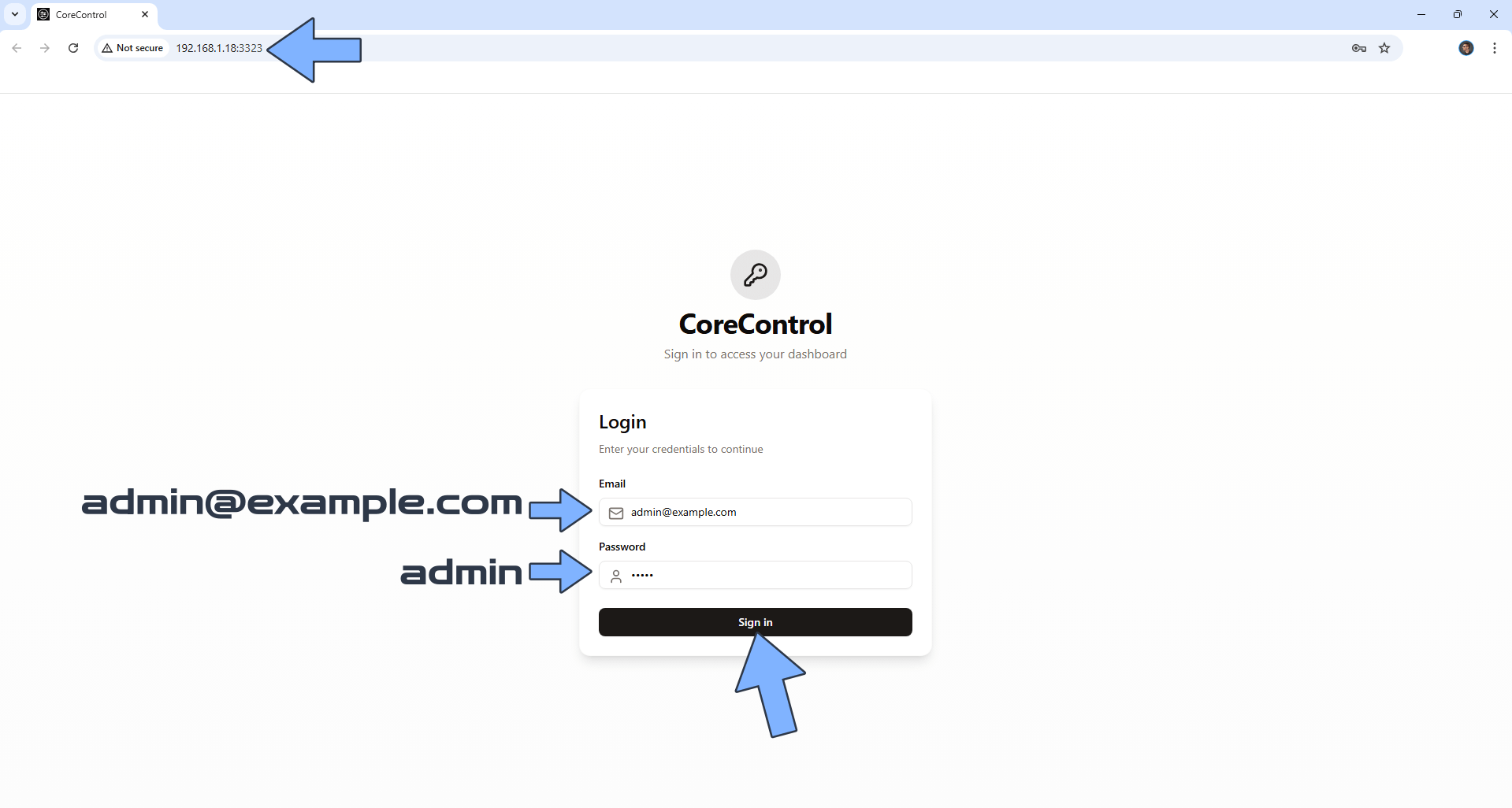
STEP 10
On the left sidebar, click Settings. Change the default Email address and Password. Switch your theme to Dark. Follow the instructions in the image below.
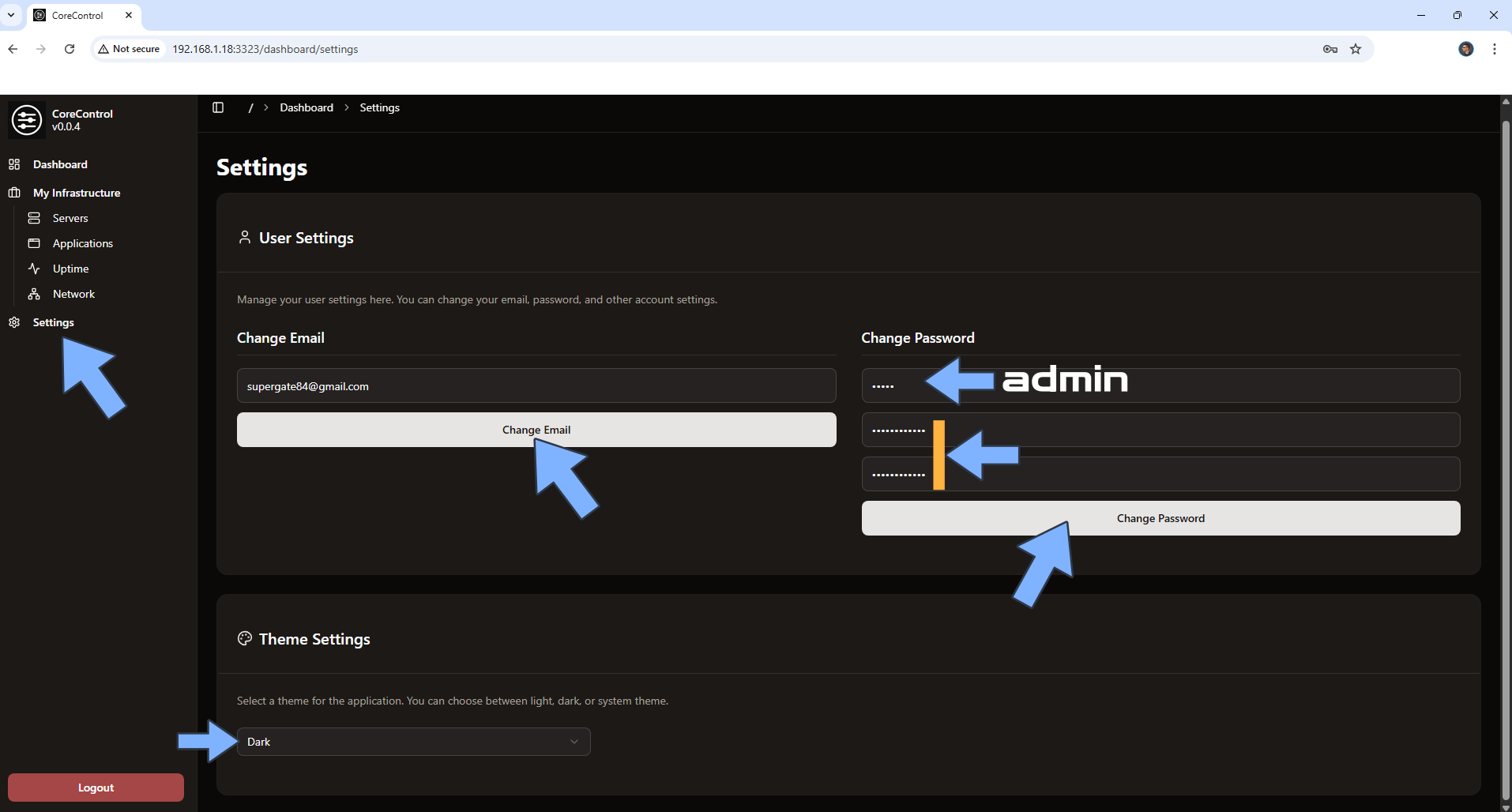
STEP 11
On the left sidebar, under My Infrastructure, click Servers. At the top right of the page, click the + icon then add your NAS Server. Click Add. Follow the instructions in the image below.

STEP 12
On the left sidebar, under My Infrastructure, click Applications. At the top right of the page, click the + icon then add your first Docker application. Click Add. Follow the instructions in the image below.
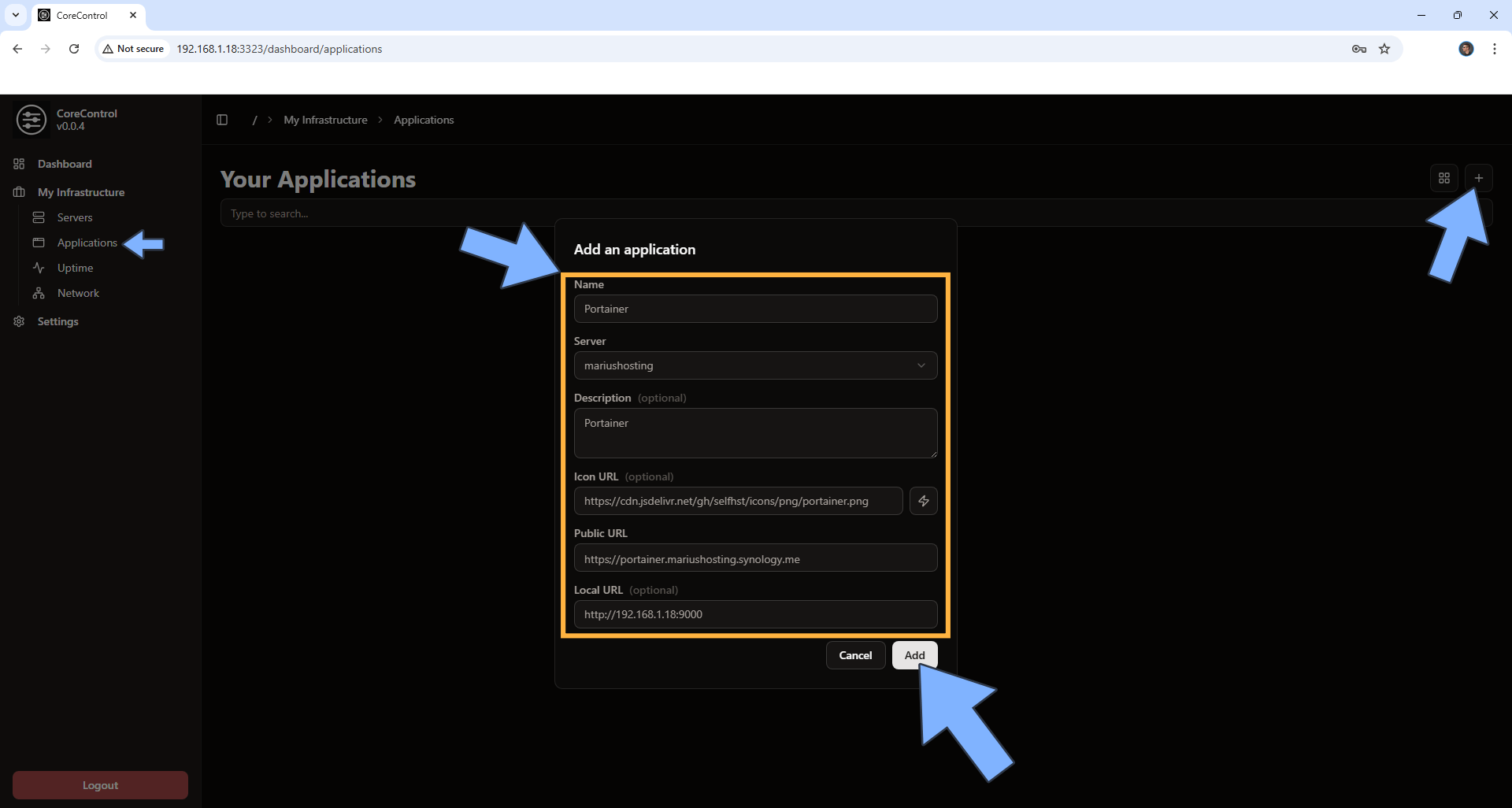
STEP 13
Your applications will be visibile on this page.
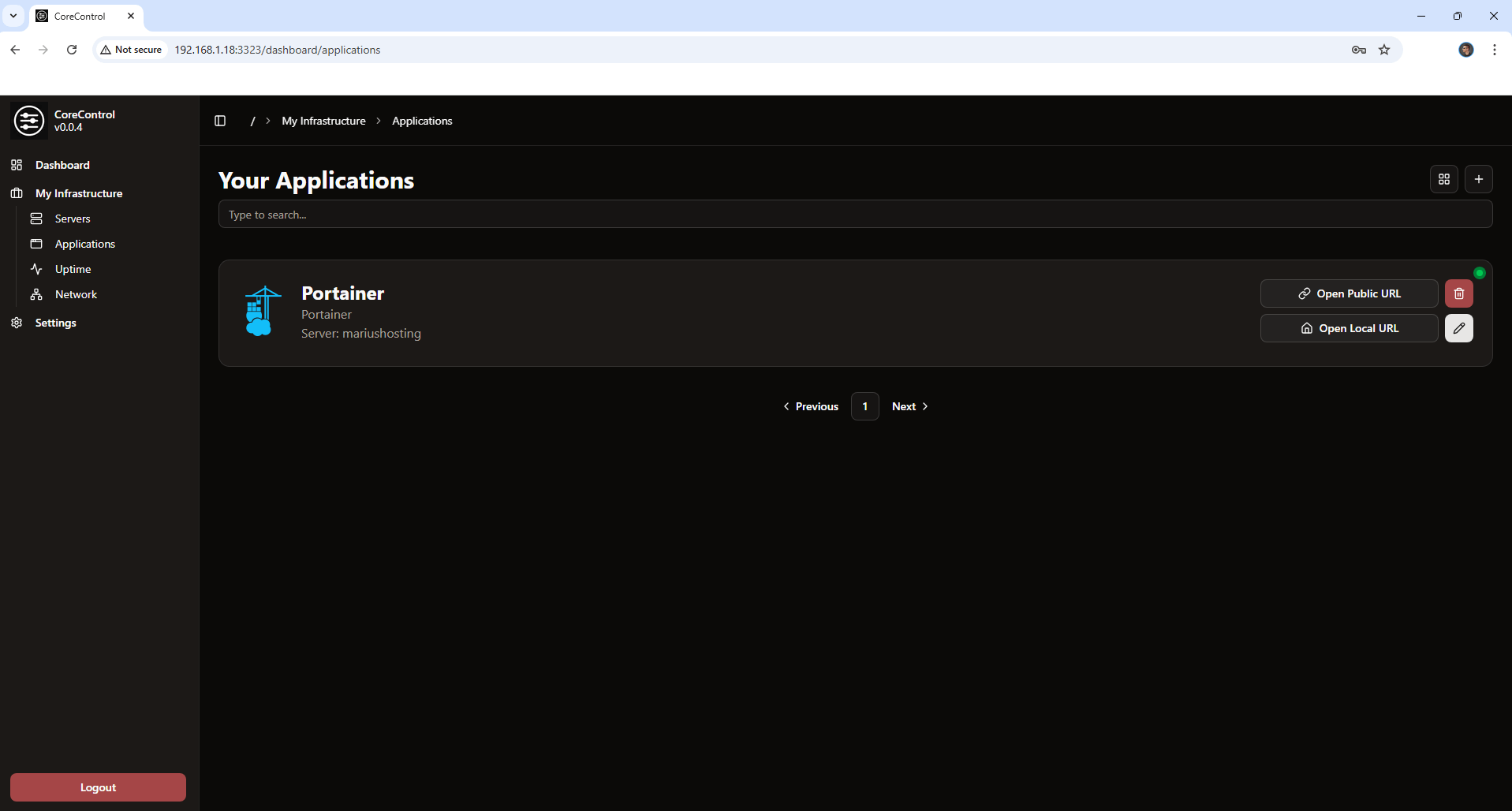
STEP 14
Your CoreControl dashboard at a glance!
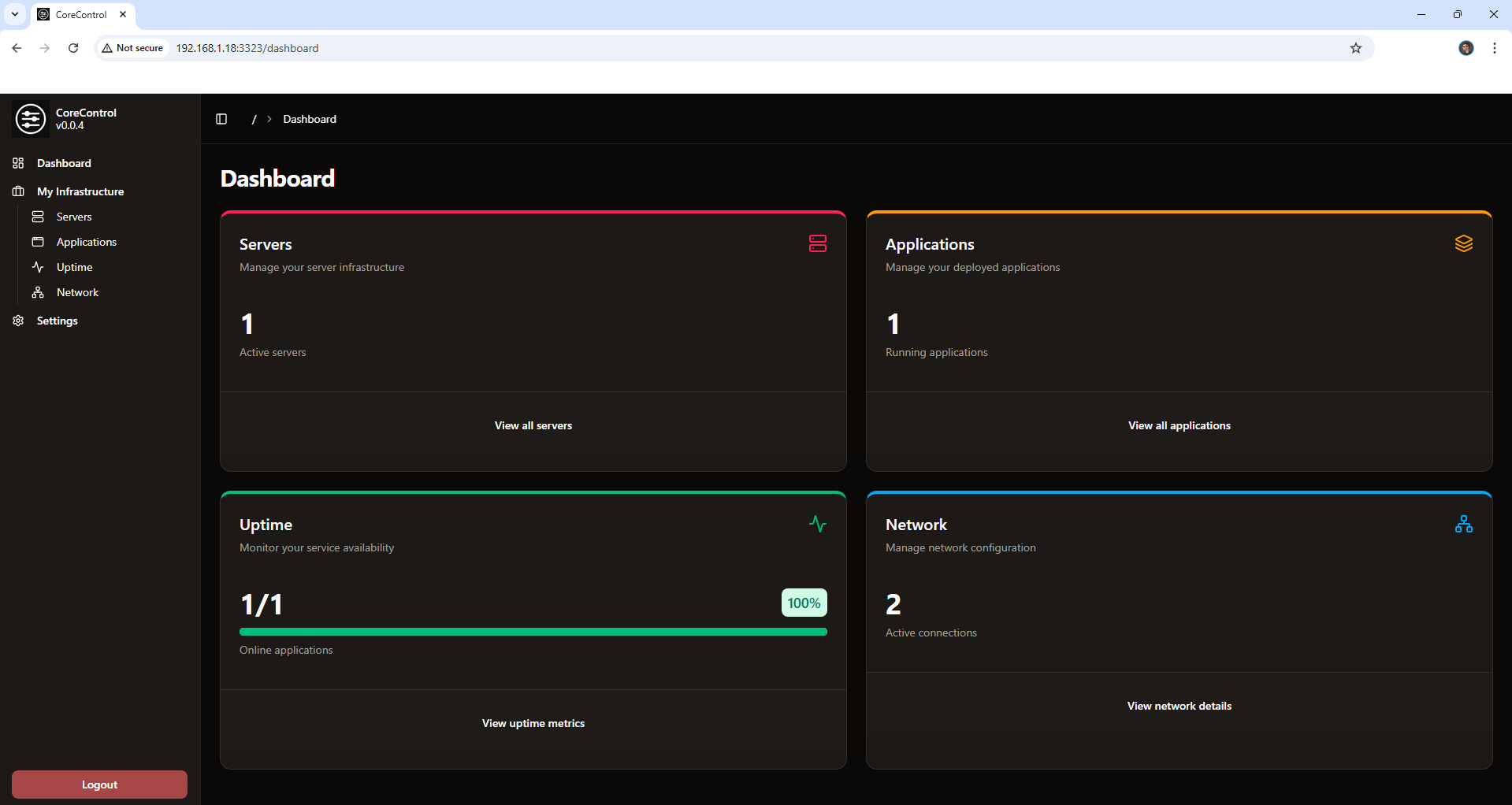
Enjoy CoreControl!
Note: If you want to run the CoreControl container over HTTPS, check How to Run Docker Containers Over HTTPS. In order to make CoreControl work over https, it’s also mandatory to set up WebSocket.
If you encounter issues by using this container, make sure to check out the Common Docker issues article.
Note: Can I run Docker on my Synology NAS? See the supported models.
Note: How to Back Up Docker Containers on your Synology NAS.
Note: Find out how to update the CoreControl container with the latest image.
Note: How to Free Disk Space on Your NAS if You Run Docker.
Note: How to Schedule Start & Stop For Docker Containers.
Note: How to Activate Email Notifications.
Note: How to Add Access Control Profile on Your NAS.
Note: How to Change Docker Containers Restart Policy.
Note: How to Use Docker Containers With VPN.
Note: Convert Docker Run Into Docker Compose.
Note: How to Clean Docker.
Note: How to Clean Docker Automatically.
Note: Best Practices When Using Docker and DDNS.
Note: Some Docker Containers Need WebSocket.
Note: Find out the Best NAS Models For Docker.
Note: Activate Gmail SMTP For Docker Containers.
This post was updated on Thursday / August 21st, 2025 at 11:43 PM
